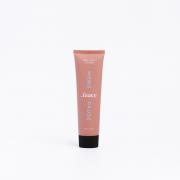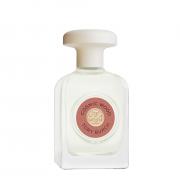Hayfever currently affects about 1 in 5 people in the UK. Sussex GP Dr Tizzy Camilleri tells us what we can do about it
Hayfever symptoms range from a runny and itchy nose, blocked nose, recurrent sneezing, watery itchy eyes and itching throat to lethargy and weakness, headaches, wheezing and feeling short of breath. Often people who suffer with hayfever have other conditions such as eczema or asthma. These conditions come under the umbrella term of atopy, which is a hereditary condition.The condition arises when pollens come into contact with the lining of the nose and the eyes, resulting in an inflammatory response where histamine is released. The degree of response is different in everyone, and therefore so is the degree of symptoms, which people get. In some cases it can be so severe as to affect people’s sleep, ability to go to school and work.
So how do we treat it?The obvious is to avoid situations or adapt our environment to reduce the exposure to these allergens. Such as not going out onto a freshly mowed lawn, wearing sunglasses when you go outside and keeping windows and doors shut as much as possible. By knowing what the pollen count is through the internet, TV, newspaper and radio you can anticipate how you are going to react and take precautions to avoid becoming symptomatic. Pollen levels in general are higher on warm, dry, windy days and are often worst in the early mornings. The pollen count is measured by the number of pollen grains per cubic metre of air and levels greater than 50 are considered to be high. There are a number of treatments you can buy over the counter or on prescription from your GP, which you should continue from the start until the end of the hayfever season.Antihistamines: these can be taken orally or nasally in a spray form. In general spray forms work quicker, within 15 minutes, whilst the oral form can take up to an hour to work. Both forms work by stopping histamine release, which is the primary cause of the symptoms. They both help to reduce sneezing and runny noses, whilst the oral form helps relieve eye symptoms and the nasal spray is more effective on relieving nasal congestion.Sodium Cromoglycate: they can be used for eye symptoms and nasal symptoms, and are usually used in situations where symptoms can be anticipated, for example before leaving the house if you know the pollen count is high. They come in the form of eye drops and nasal sprays.Corticosteroids: These cannot be used on an “as and when” basis but are used to prevent the symptoms arising in the first place. They take on average one week to start working and people generally start using them from just before the start of the hayfever season (March) right until the end (July/August). They help the feelings of nasal itching, running and congestion, and sneezing as well as helping eye symptoms. Using them in a nasal spray form has negligible affects on the rest of your body so you don’t need to worry about long term side effects of steroid use and they can be used in conjunction with antihistamines (spray and oral forms). Decongestants: These help to unblock your nose, again they come in oral forms or as a nasal spray. They cannot be used for more than a week at a time as they then tend to make congestion worse, and result in harder to treat conditions.Allergen exposure: This is done on patients with moderate to severe symptoms who generally are resistant to other treatments and in whom the last resort would be oral steroid tablets, which can be used in severe exceptional short-term cases such as for students doing exams which can often be a problem during the summer months. In terms of drug-free treatments, unfortunately the evidence is not that convincing, but different natural powders and balms have been tried intra-nasally, the theory being that they trap pollen grains entering the nose. Others swear by a spoonful of honey a day to dampen down symptoms…if anything you will start your day off sweeter!


























